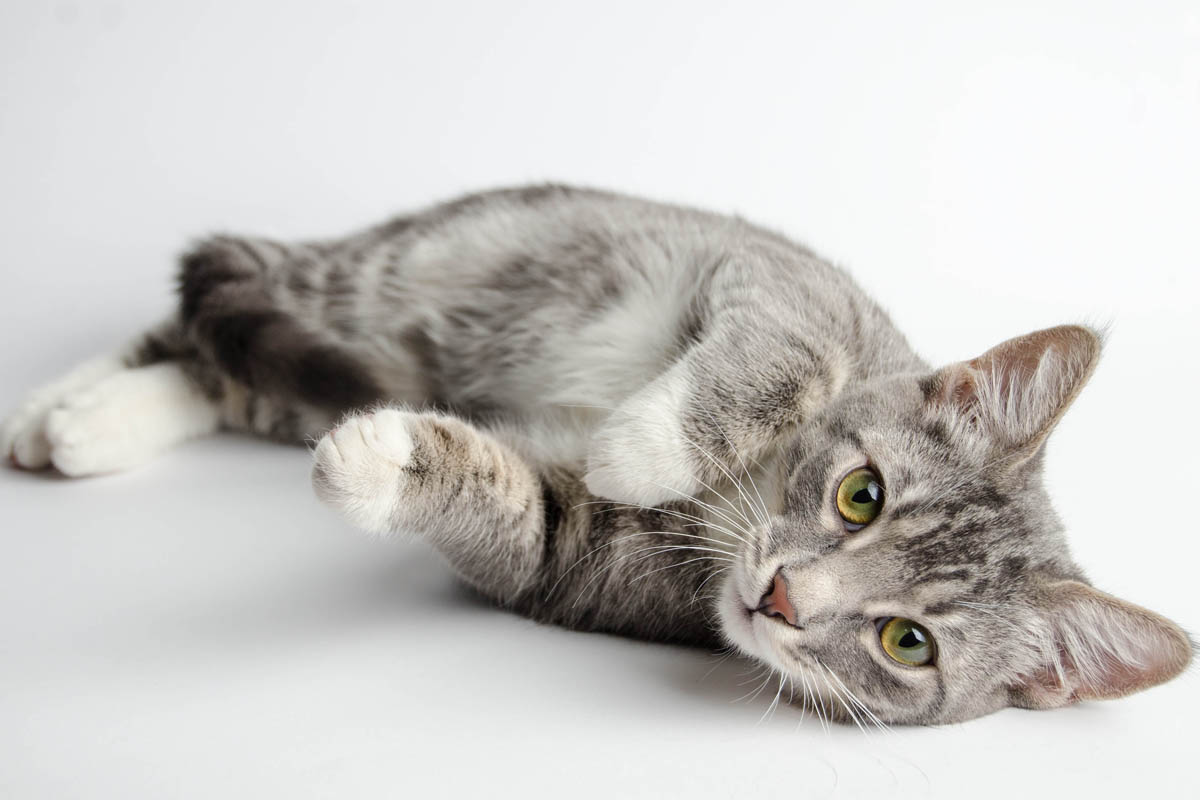At a glance
|
What is flea allergy dermatitis?

Flea allergy dermatitis (FAD) or flea-bite hypersensitivity is a common itchy skin disease caused by a hypersensitivity to components of the flea saliva (antigens, amino acids, aromatic compounds, polypeptides, and phosphorus), which the flea injects into the skin as it feeds. The cat’s immune system reacts in an exaggerated or inappropriate way to this exposure which produces the characteristic signs of intense itching and dermatitis.
FAD is most prevalent in summer but can persist throughout the year in warmer climates and is a significant cause of miliary dermatitis in cats and the most common type of allergy.
Fleas can be active year-round in southern parts of the globe or the summer months in northern regions. Numbers generally peak towards the end of summer and into early autumn.
There is no breed or sex predilection although FAD is uncommon in cats under 12 months.
Causes
There are 15 known allergens in flea saliva, each one is capable of causing an allergic reaction in the cat, and just one bite is enough to trigger an allergic reaction.
Symptoms

- Raised crusty bumps (miliary dermatitis) on the skin, common areas include the face, neck, groin, armpit (axilla), back (dorsal lumbosacral) and base of the tail.
- Frequent scratching, licking and biting.
- Self-trauma leads to open sores, particularly around the neck.
- Self-induced alopecia (hair loss) due to excessive grooming.
- Secondary bacterial infections can develop due to trauma. This may present as red and inflamed areas along with an unpleasant odour coming from the skin.
- The presence of fleas or flea dirt (feces). Flea dirt is reddish black, with a similar appearance to a grain of pepper. Fleas and flea feces are easier to spot on light coloured cats.
- Examination of the cat’s bedding may reveal flea feces and eggs, which have a salt and pepper appearance.
Cats can experience seasonal or year-round symptoms depending on their geographical location.
Diagnosis
The veterinarian will perform a physical examination of your cat and obtain a medical history from you. In most cases, the veterinarian will be able to diagnose FAD based on clinical symptoms alone.
Differential diagnosis:
As there are many other causes of miliary dermatitis in cats, the veterinarian may recommend skin patch testing (or intradermal testing). This involves shaving an area of skin and injecting the area with small amounts of common allergens (including flea allergens) to see if the cat mounts an allergic response to any.
A fungal culture can be useful to rule out fungal infection. A sample is taken using a cotton swab or a new toothbrush and is sent to a laboratory where it is grown on a culture medium under ideal conditions. The sample is regularly monitored to identify a fungal cause.
Diagnosis:
Fleas and/or flea dirt may be present in the cat’s coat; although this is easier to see on light coated cats. Pet owners may report that they have not seen evidence of fleas, however, just one flea bite is enough to induce an allergic response in affected cats.
Specialised blood tests can also confirm flea allergy dermatitis by detecting IgE antibodies in the blood.
Treatment
The only permanent solution for flea allergy dermatitis is to eradicate fleas and prevent re-infestation of fleas with a regular flea treatment regime.
- Treat all pets with a veterinary-approved adulticide flea spray, spot-on solutions or tablets
- As the majority of the flea life-cycle is spent in the home, it is vital to treat the home concurrently with insect growth regulators (IGRs) which includes beds, toys, rugs, carpets, and outdoor areas
- Antibiotics (Cephalexin) or medicated shampoos to treat secondary bacterial skin (pyoderma) infection
- A short course of oral glucocorticoids (usually prednisolone) to control inflammation and relieve itchiness. Long-term steroid use can produce side effects, therefore will be discontinued once symptoms resolve
- Shampoos: Chlorhexidine (bacterial), miconazole (fungal), oatmeal
Prevention
Diligent flea control to prevent a flea infestation in the first place. Veterinary approved flea products are the most effective, which include topical treatments and oral tablets.
Safety
- If you are using a topical flea product, do not shampoo the cat afterwards as this can wash off the topical treatment.
- Don’t mix flea control products unless your veterinarian recommends you do so, to avoid doubling up of products that can cause toxicity.
- Never use a flea product designed for dogs on your cat. Dog flea products contain different ingredients which are highly toxic to cats.

